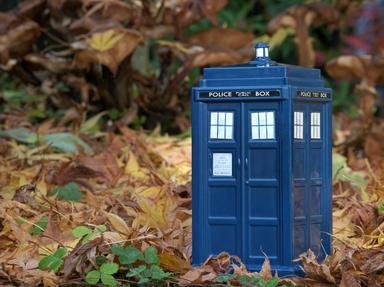Quiz Answer Key and Fun Facts
1. At a 1920s English garden party the tenth Doctor uncovered the mystery behind the disappearance of this famous mystery writer. Who did he meet?
2. Queen Victoria was not amused when the Doctor came to her aid, and she banished him and his friend, Rose. There was one English queen, however, who took a liking to the Doctor. Which heirless 16th century royal did he meet?
3. In one of the very first serials of the show, the Doctor met a famous merchant. They ran into each other in what is now China, but the merchant was originally from Venice and returned there after his travels. Who was he?
4. The Doctor visited a failing painter in Provence, France. He tried to give emotional and psychological support to his new friend, but in the end nothing changed. Who was this now-famous artist?
5. The Doctor met another English author at a 'farewell reading' of one of his most famous stories. Who is this nineteenth century writer?
6. On a visit to the Cabinet War Rooms during this man's first term as Prime Minister, which Conservative politician did the Doctor meet?
7. The Doctor didn't get the chance to say goodbye this time. When he finally returned, this French lady was leaving Versailles for the last time. Looking out at her coffin in the rain, the King of France remarked that 'The marquise won't have good weather for her journey.' Who was she?
8. In twentieth century Europe, the Doctor met a man who had fought in battles in World War I, including at the Somme. Prior to that, he sold watercolour paintings, but his money ran out and he became homeless. After the war, this man turned to politics. Who was he?
9. Though the name of the real man and the 'Doctor Who' character differ slightly, many fans consider - or at least like to think - that they are one and the same. This historical figure was a banker living in Pompeii. Part of his house still stands after the volcanic eruption and can be seen in the ruins of the town. What is the real name of this Roman man?
10. This eighteenth dynasty Ancient Egyptian was the wife of Akhenaten, famous for replacing polytheism in Egypt for worship of one god, Aten. What was her name?
Source: Author
AcrylicInk
This quiz was reviewed by FunTrivia editor
ladymacb29 before going online.
Any errors found in FunTrivia content are routinely corrected through our feedback system.

